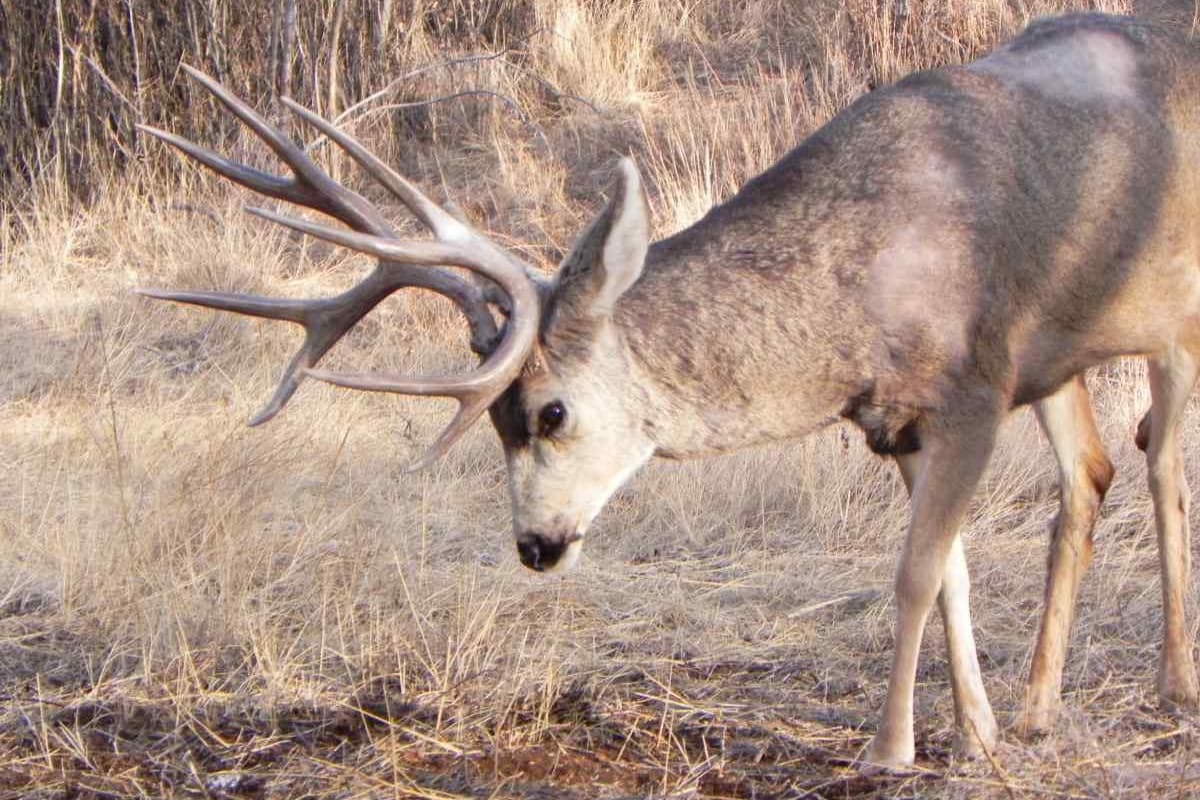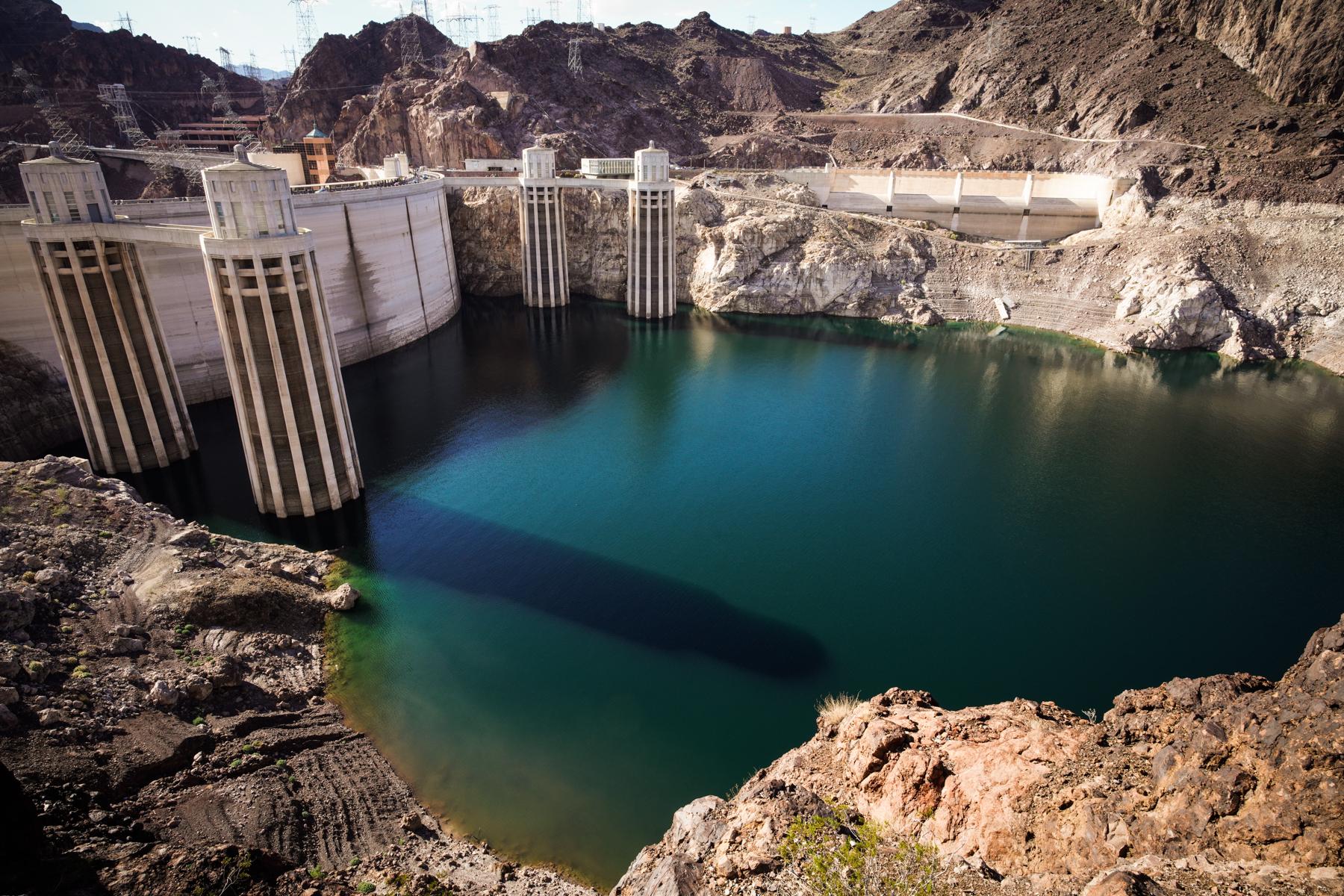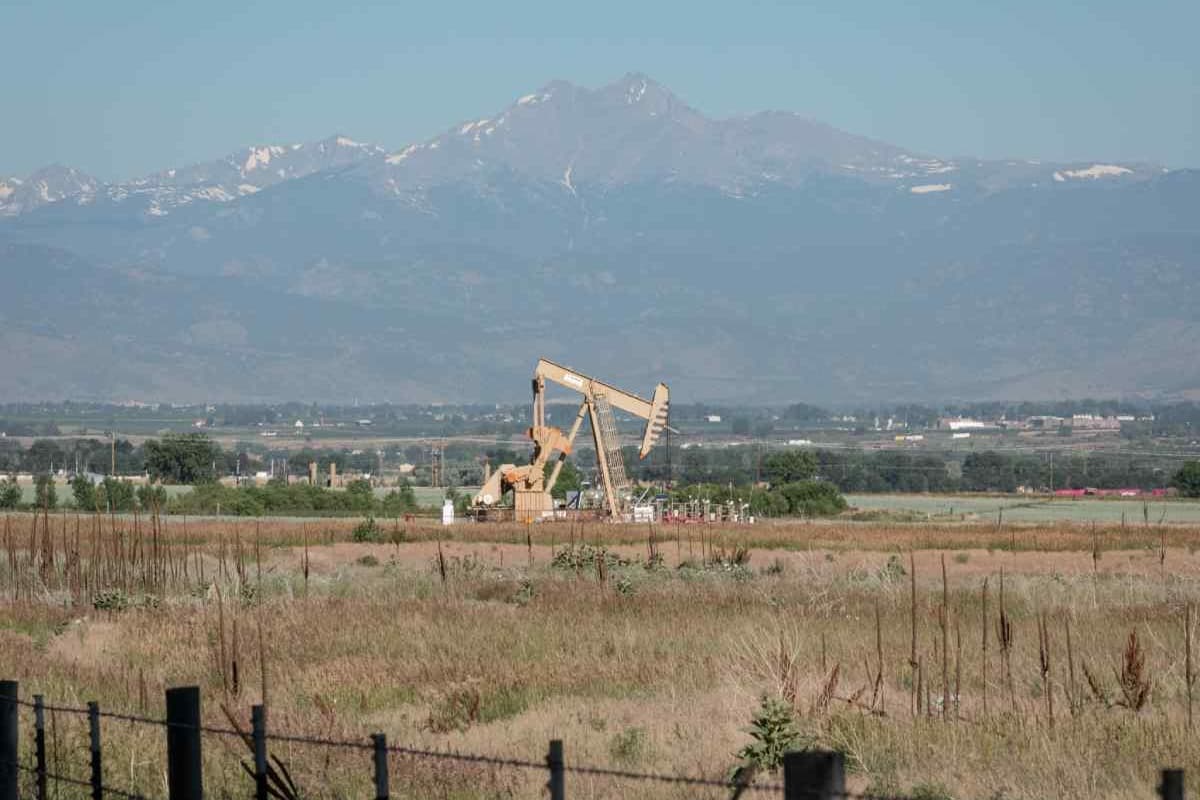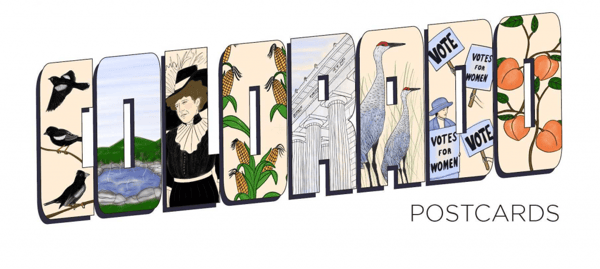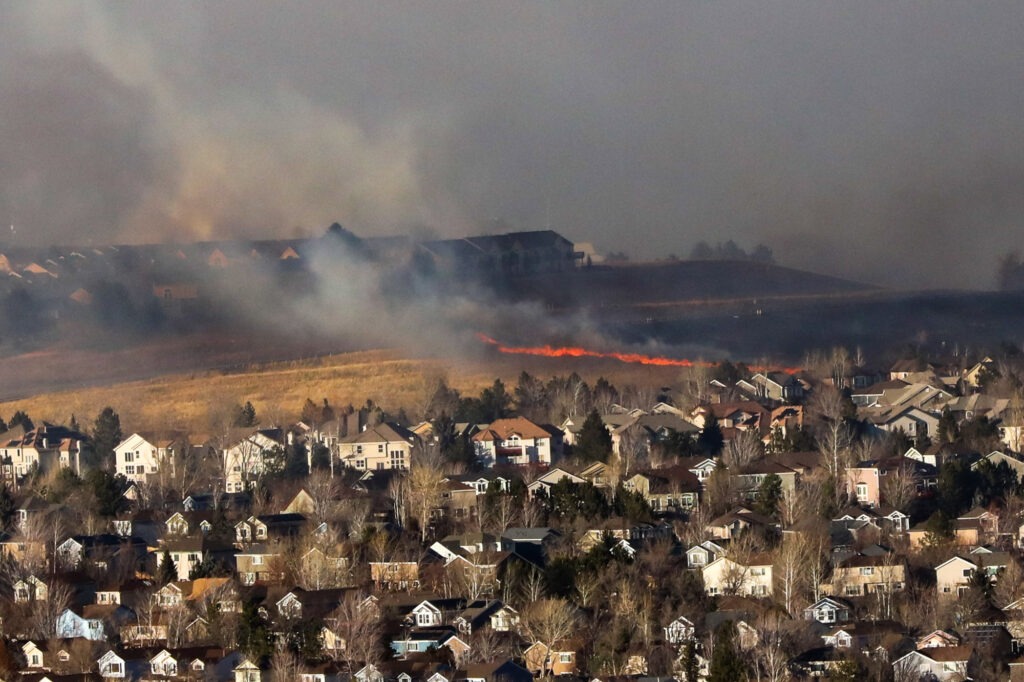
Plenty of rain has fallen on Front Range cities this spring, creating lush stretches of green grassland. It’s a far cry from parts of the Western Slope that remain in an extreme drought and are already primed for fire.
But with climate change altering weather patterns, ample spring rain on the Front Range could lead to greater wildfire risk in the fall and even the winter as things dry out. That’s because green, tall grass will likely morph into brown, dry fuel for wildfires.
“[Grasslands] are booming right now,” said Katharine Suding, a CU-Boulder distinguished ecology professor who studies grasslands. “But all that green material that you see is gonna turn into fuel.”
Grassland fires can burn intensely under the right conditions. And since grasslands cover a huge portion of Colorado’s foothills and plains, that fuel can pose a threat to communities. Grasses near Colorado’s foothills are also taller than the prairie grass that stretches into Kansas.
“The biomass is more, and so the fire risk is more,” Suding said of grasses around the foothills. “And that just happens to be where we all live in Colorado too.”
May is typically the Front Range’s wettest — and greenest — month, as rains create a surge of new growth in grasslands. By July and August, the area transitions to a monsoon season, when most rainfall comes from thunderstorm bursts.
By mid-to-late summer, however, grasses also begin the natural process of “senescing,” or turning brown and dying off. This makes grasses more fire-prone, since green grass is filled with moisture and less flammable.
Climate change is also creating more variability around familiar weather patterns. That means that some periods may be wetter than normal, while other times are much drier.
“So we have more chances of a really wet spring and a really dry fall,” Suding said. “And so that's the perfect storm in terms of fire risk come fall.”
Suding said this spring reminded her of 2021, when ample rain created lush grassy fields around Superior and Louisville. But an exceptionally arid autumn led to a sea of dead grass that fueled the devastating Marshall Fire, which started in grassland and then became an urban blaze.
Several factors influence fire risk, including fuels, topography and weather — a drier climate is “thirstier” and dries out grasslands sooner. Controlling fuel from grasslands can help cut fire risk, Suding says, even if it’s challenging.
“Reducing fuels in a grassland is a really tough thing, because anyone with a lawn would know that you can mow a grassland and it's gonna grow right back, and you're gonna have to mow it again,” she said.
How to protect yourself
One aspect of Suding’s research focuses on reducing grassy fuels without creating a dust bowl-esque landscape. She’s partnering with Boulder County to test if a combination of mowing, cattle-grazing and even prescribed burns could be effective. Already, the county is using cows to graze grasses, and mowing grasslands next to neighborhoods.
Homeowners can also replace flammable plants like juniper with shrubs and shorter plants that are less likely to spread a grassland fire.
“Those also could reduce fire risk without totally removing anything green and interesting from your backyard,” she said.
Grasslands aren’t just fuel-in-waiting. They are also biodiversity hotspots that cover 40 percent of Earth’s land-based ecosystems and can lock away planet-warming carbon underground.
But as climate change drives up wildfire risk, Suding said Colorado and other states like Texas, Oklahoma, California and even Hawaii would need to start considering grasslands differently.
“ Typically a lot of our fire work focused on reducing risk in forests,” Suding said. “And now grasslands are creating that risk as well.”
- Is there a ‘Goldilocks’ amount of rain to avert wildfire disaster?
- While drought hits the Western Slope, southeastern Colorado looks okay — for now
- Wildfires are reaching areas that never worried before. Here’s how to protect your home
- Drought conditions likely to get worse in Colorado as Western water supplies shrink

